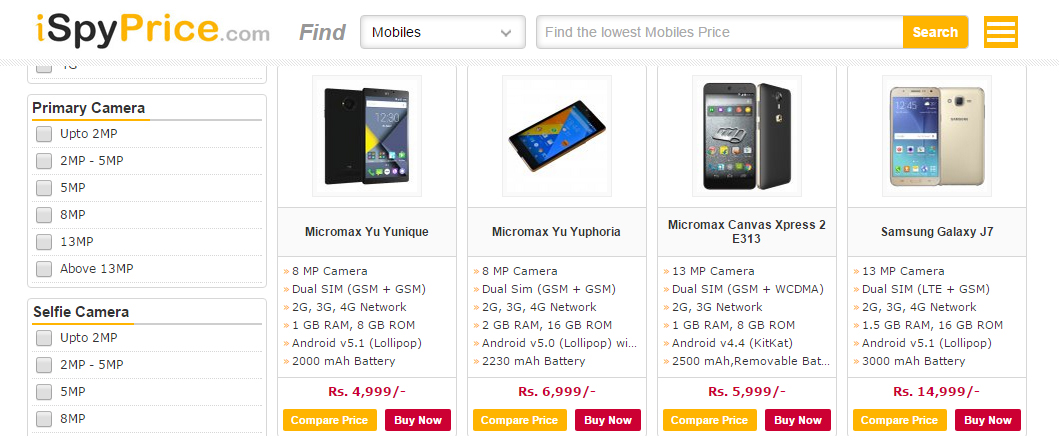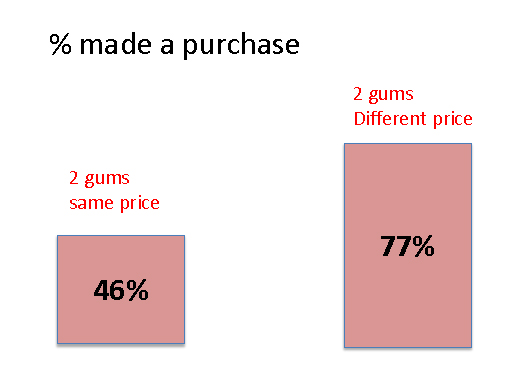The Holy Grail of Pricing Strategies: A Closer Look at Price Comparison in E-Commerce!
by October 15, 2015 2,215 views1
The e-commerce industry seems to be in a perpetual state of expansion and slowing down doesn’t seem to be on its agenda anytime soon. The last decade (2005-2015) has been particularly fruitful for the e-commerce industry as a multitude of e-commerce brands have spawned and associated business verticals have come into existence. Most important of all, thanks to the proliferation of the Internet, a much improved social infrastructure, and the ease of accessibility, the consumer has taken a liking to the e-commerce model.
When all of these came together, marketers and salespeople realized there are multiple goldmines waiting to be unearthed. Despite the magnitude of this opportunity quite a few online businesses have still not found, as it were, the winning formula.
In order to make best use of the e-commerce opportunity one of the most critical factors that brands must focus a great deal on is the pricing strategy. An idea that many of these brands have undermined is that the price of a product or a service available online needs to remain a function of the consumer behavior that is commonly observed in the physical bricks and mortar commerce. The pricing strategy needs to be carefully thought out and scientifically evaluated for the e-commerce model as it has been for the offline model over the years. This is why price comparison is blossoming into a mini-industry all its own.
Let us go through some of the most important pricing strategies that when executed in earnest have given proven results.
Small Difference makes all the difference
One of the most widely used pricing strategies is the Price-Adjustment strategy. Without going into the finer details how price adjustment works we can safely say that prices of products require adjustments owing to several factors. These factors include the geographical pricing, discounted pricing, promotional pricing, and segmented pricing among others. But perhaps the most common factor in price-adjustment is the psychological pricing factor. Research has shown that a customer’s choice depends on context.
According to a Yale research published on Psychological Science adding small differences in pricing of different products can result in an increased similarity and choice. This was demonstrated by observing consumer behavior when two different packs of gum were placed under two defined scenarios. Scenario 1 had both packs of gum priced at 63 cents, while scenario 2 had these same products differently priced at 62 cents and 64 cents. When given a choice of buying a pack of gum or keeping the money, 77% of consumers bought a pack of gum when the prices offered were different (scenario 2), while only 46% bought a pack of gum when the prices offered were same (scenario 1).
When you as an online business know that this experiment shows a significant difference in consumer behavior based on the pricing strategy used you are likely to take action and price your products strategically.
The power of 9. Yes, it works!
Have you ever wondered why so many brands price so many of their products ending with 9? No it’s not because brands are superstitious. Research has shown that ending the price of certain products at 9 works wonders and leads to a direct increase in sales because of how consumers perceive pricing.
 An experiment conducted by MIT and the University of Chicago on women’s clothing showed that an item sold best when it was priced at $39 when compared to a cheaper price of $34 and a higher prices of $44. Several other similar experiments have proved that pricing a product ending with 9 seems to be the best selling price for certain products. The reason for this has much to do with how consumers perceive different price points.
An experiment conducted by MIT and the University of Chicago on women’s clothing showed that an item sold best when it was priced at $39 when compared to a cheaper price of $34 and a higher prices of $44. Several other similar experiments have proved that pricing a product ending with 9 seems to be the best selling price for certain products. The reason for this has much to do with how consumers perceive different price points.
Apparently pricing a product ending with 9 does give the impression that it is either relatively cheaper compared to another product priced higher or that it is priced slightly higher because it may be of better quality. The perception of quality often plays a crucial role in how consumers make a buying decision.
Limiting choices and getting rid of paralysis by analysis is essential
While offering consumers a lot of choice may in terms of products and services may seem like a great consumer experience strategy it can also serve as a major deterrent to you sales figures. In your quest to offer brilliant products and solutions to your customers you must not lose sight of what will keep your business afloat – sales. Sales happens when you create customers for your business. You must channel your energies in creating customers.
“The purpose of a business is to create customers.”
– Peter Drucker.
By limiting choices you are helping a large majority of your existing and potential customer base from falling for the destructive paralysis by analysis mindset. Remember that you may want to give them choices but not so many and not so similar in nature that they get consumed in the decision making process. Good businesses help customers decide. Great businesses positively influence the customer decision making process.
The name of the game is enabling Price Comparison
If you notice carefully these 3 incredibly influential pricing strategies, and a majority of pricing strategies, are possible only by introducing the customer to the hidden sanctum of price comparison. By introducing a point of comparison consumer behavior can not only be monitored effectively but most importantly it can be quantified, as is the case with researches cited above. This ability to quantify consumer behavior will eventually empower you to choose the best pricing strategies suited to your business.






